Verkabelung von sechs 12-V-Batterien zum Aufbau eines 36-V-Stromversorgungssystems
Die Erstellung eines 36-V-Stromversorgungssystems durch die Verkabelung von sechs 12-V-Batterien kann Ihre Energieeffizienz und Speicherkapazität für verschiedene Anwendungen deutlich verbessern – von netzunabhängigen Solaranlagen über Elektrofahrzeuge bis hin zu Schiffssystemen. In dieser umfassenden Anleitung führen wir Sie Schritt für Schritt durch den gesamten Prozess und gewährleisten Sicherheit, Effizienz und maximale Leistung.
- Warum Sie sich für ein 36-V-Stromversorgungssystem entscheiden sollten
- So verdrahten Sie sechs 12-V-Batterien für ein 36-V-Stromversorgungssystem
- Konfigurationen für bestimmte Anwendungsfälle eines 36-V-Stromversorgungssystems
- Verwalten und Überwachen Ihres 36-V-Stromversorgungssystems
- Laden eines 36-V-Stromsystems
- Fehlerbehebung bei Ihrem 36-V-Stromsystem
- Aufrüsten Ihres 36-V-Stromversorgungssystems
- Reale Anwendungsfälle für 36-V-Stromversorgungssysteme
- Abschließende Gedanken zur Verkabelung von sechs 12-V-Batterien zum Aufbau eines 36-V-Stromversorgungssystems
Warum Sie sich für ein 36-V-Stromversorgungssystem entscheiden sollten
Ein 36-V-Stromversorgungssystem bietet einen idealen Mittelweg zwischen Niederspannungssystemen wie 12 V oder 24 V und Hochspannungssystemen wie 48 V. Es wird häufig in Golfwagen, Elektrofahrrädern, Solarstromspeichern und sogar einigen Wohnmobilsystemen verwendet. Diese Konfiguration bietet:
Höhere Energieeffizienz
Reduzierter Strom (Ampere), wodurch Verluste verringert werden
Kompatibilität mit vielen Mittelspannungswechselrichtern und -reglern
Der Übergang zu einem 36-V-Stromversorgungssystem bedeutet, dass Sie Ihre Speicher- und Stromversorgungskonfiguration für eine Reihe mittelgroßer Energieanforderungen optimieren müssen.
Grundlegendes zu Batterien
Was ist Spannung und wie funktioniert sie?
Spannung ist die elektrische Potenzialdifferenz zwischen zwei Punkten. Eine einzelne 12-V-Batterie hat eine Nennspannung von 12 Volt, was bedeutet, dass sie Elektronen mit einer Kraft entsprechend 12 Volt durch einen Stromkreis drückt.
Was ist Batteriekapazität?
Die in Amperestunden (Ah) gemessene Batteriekapazität gibt an, wie viel Ladung die Batterie speichern kann. Ein höherer Ah-Wert bedeutet eine längere Energieversorgung.
Reihen- vs. Parallelverdrahtung
Bevor Sie sich in die Verkabelung von sechs Batterien stürzen, ist es wichtig, die Reihen- und Parallelschaltungen zu verstehen:
Serie : Spannung wird addiert (12 V + 12 V + 12 V = 36 V), die Kapazität bleibt gleich.
Parallel : Erhöht die Kapazität (Ah), die Spannung bleibt gleich.
Für ein 36-V-Stromversorgungssystem schalten Sie Ihre Batterien in Reihe .
>>Siehe auch Gründe für die Wahl eines Craftsman 60-V-Lithium-Ionen-Akkus
So verdrahten Sie sechs 12-V-Batterien für ein 36-V-Stromversorgungssystem
Werkzeuge und Materialien, die Sie benötigen
Sechs 12-V-Batterien (vorzugsweise Deep-Cycle- oder Lithium-Ionen-Batterien)
Batteriekabel (Stärke basierend auf der Stromstärke)
Ein Voltmeter/Multimeter
Schutzbrille und Handschuhe
Anschlussfahnen
Isolierband und Schrumpfschlauch
Sicherheit geht vor
Bevor Sie beginnen:
Tragen Sie isolierte Handschuhe
Entfernen Sie allen Metallschmuck
Arbeiten Sie in einem gut belüfteten Bereich
Überprüfen Sie die Polarität (positive und negative Anschlüsse) doppelt.
Schritt-für-Schritt-Anleitung zur Verdrahtung
1. Batterieklemmen identifizieren
Jede Batterie verfügt über einen Pluspol (+) und einen Minuspol (−). Bei einer Reihenschaltung verbinden Sie Plus- und Minuspol.
2. Batterien in Reihe schalten
2.1 Batterie 1 positiv → Batterie 2 negativ
2.2 Batterie 2 positiv → Batterie 3 negativ
2.3 Wiederholen bis Batterie 6
3.Endgültige Verbindungen
3.1 Der Minuspol der ersten Batterie ist der Minuspol Ihres Systems.
3.2 Der Pluspol der letzten Batterie ist der Pluspol Ihres Systems.
3.3 Sie verfügen jetzt über ein 36-V-Stromversorgungssystem .
Konfigurationen für bestimmte Anwendungsfälle
Zur Speicherung von Solarenergie
Wenn Sie die Verkabelung für ein Solarsystem vornehmen, benötigen Sie:
Ein 36V-kompatibler MPPT-Laderegler
Solarmodule mit passender Spannungsausgabe
Richtige Batteriemanagementsysteme (BMS)
Für Elektrofahrzeuge
Elektroroller, Golfwagen oder kleine Elektrofahrzeuge verwenden häufig 36-V-Systeme. Stellen Sie Folgendes sicher:
Der Motor und der Controller sind für 36 V ausgelegt
Einsatz eines BMS zum Schutz vor Überladung
Für Wohnmobile und den Einsatz auf See
Eine 36-V-Konfiguration reduziert den Kabeldickenbedarf und die Wärmeentwicklung. Stellen Sie sicher:
Korrosionsbeständige Anschlüsse
Wetterfeste Verbindungen
Verwalten und Überwachen Ihres 36-V-Stromversorgungssystems
Batteriemanagementsystem (BMS)
Ein BMS ist insbesondere für Lithiumbatterien unerlässlich. Es:
Gleicht die Ladung zwischen den Zellen aus
Verhindert Überladung und Tiefentladung
Verlängert die Batterielebensdauer
Spannungsüberwachung
Verwenden Sie ein Voltmeter oder installieren Sie einen digitalen Batteriemonitor. Dies wird:
Warnt Sie vor Ungleichgewichten
Helfen Sie dabei, den Ladezustand (SOC) zu verfolgen
Wartungstipps
Überprüfen Sie die Terminalverbindungen monatlich
Reinigen Sie die Anschlüsse, um Korrosion zu vermeiden
Führen Sie bei Blei-Säure-Batterien regelmäßig einen Ausgleichsladevorgang durch
Laden eines 36-V-Stromsystems
Auswahl des richtigen Ladegeräts
Verwenden Sie nur ein Ladegerät, das für 36-V-Systeme geeignet ist. Es gibt zwei Haupttypen:
Intelligente Ladegeräte : Passen Sie die Ladezyklen automatisch an
Manuelle Ladegeräte : Erfordern eine Benutzerüberwachung
Solaraufladung
Bei Verwendung von Solarenergie:
MPPT-Regler sind effizienter als PWM
Stellen Sie sicher, dass die Panel-Array-Spannung 36 V übersteigt, um den Ladevorgang auszulösen
Sicherheitstipps zum Laden
Verwenden Sie niemals ein 12V- oder 24V-Ladegerät
Überladung vermeiden, Trennrelais einbauen
Verwenden Sie ein BMS mit automatischer Abschaltung
Fehlerbehebung bei Ihrem 36-V-Stromsystem
Häufige Probleme und Lösungen
1. System erreicht keine 36 V
Überprüfen Sie alle Verbindungen
Testen Sie die Spannung jeder Batterie einzeln
2. Eine Batterie entlädt sich schneller
Könnte eine defekte Zelle sein
Ersetzen oder isolieren Sie die Batterie
3. Systemüberhitzung
Kann an zu kleinen Kabeln liegen
Verkabelung aufrüsten und Anschlüsse prüfen
Aufrüsten Ihres 36-V-Stromversorgungssystems
Wann sollte eine Skalierung erfolgen?
Erwägen Sie ein Upgrade, wenn:
Der Strombedarf steigt
Sie erweitern Ihre Solaranlage
Sie steigen auf Lithiumbatterien um
Kapazität hinzufügen
Sie können die Ah-Kapazität erhöhen und gleichzeitig 36 V beibehalten, indem Sie einen weiteren Satz von sechs 12-V-Batterien parallel zu Ihrer vorhandenen Serie hinzufügen. Dadurch verdoppelt sich Ihr Energiespeicher.
Lithium- vs. Blei-Säure-Batterien
|
Besonderheit |
Lithium |
Blei-Säure |
|
Gewicht |
Feuerzeug |
Schwerer |
|
Lebenszyklus |
2000-5000+ |
300-800 |
|
Wartung |
Niedrig |
Mäßig |
|
Kosten |
Höher |
Untere |
Lithium ist zwar teurer, stellt jedoch die Zukunft der Batterietechnologie dar und eignet sich perfekt für ein 36-V-Stromversorgungssystem .
>>Siehe auch: Ein vollständiger Überblick über 48-V-Batterien und ihre Spannung und Kapazität
Häufig gestellte Fragen (FAQs)
Kann ich einen 12-V-Wechselrichter mit einem 36-V-Stromsystem verwenden?
Nein, der Wechselrichter muss zur Systemspannung passen. Verwenden Sie einen 36-V-Wechselrichter.
Wie lange läuft mein System?
Hängt von der Gesamt-Ah-Zahl ab. Beispielsweise liefern sechs 100-Ah-Batterien bei 36 V 3600 Wattstunden (Wh).
Ist es sicher, ein 36-V-Stromversorgungssystem selbst zu bauen?
Ja, wenn es sorgfältig gemacht wird. Bei anspruchsvollen Anwendungen sollten Sie jedoch einen Fachmann konsultieren.
Reale Anwendungsfälle für 36-V-Stromversorgungssysteme
Solarkabine
Viele netzunabhängige Hütten nutzen 36-V-Systeme zur Stromversorgung von Lampen, Kühlschränken und kleinen elektronischen Geräten. Sie bieten einen idealen Kompromiss zwischen 24-V- und 48-V-Systemen.
Elektrische Dreiräder
Diese verwenden oft 36-V-Motoren. Die Verkabelung von sechs 12-V-Batterien bietet ausreichend Reichweite, ohne den Rahmen zu überlasten.
Mobile Werkstätten
Elektrowerkzeuge, Lampen und Kompressoren können mithilfe eines Wechselrichters effizient mit einem 36-V-Stromsystem betrieben werden.
Umweltauswirkungen und Recycling
Die ordnungsgemäße Entsorgung von Batterien ist entscheidend. Geben Sie alte Batterien an den dafür vorgesehenen Recyclingstellen ab. Lithiumbatterien haben ein höheres Recyclingpotenzial und enthalten weniger Schwermetalle als Blei-Säure-Batterien.
Abschließende Gedanken zur Verkabelung von sechs 12-V-Batterien zum Aufbau eines 36-V-Stromversorgungssystems
Ein 36-V-Stromversorgungssystem aus sechs in Reihe geschalteten 12-V-Batterien ist eine intelligente und skalierbare Lösung für viele Anwendungen mittlerer Leistung. Ob Sie eine Solarkabine, ein Elektrofahrzeug oder eine entfernte Werkzeugstation mit Strom versorgen – dieses System bietet ein ausgewogenes Verhältnis aus Effizienz, Handhabbarkeit und Kosteneffizienz. Beachten Sie unbedingt die Sicherheitsprotokolle, verwenden Sie die richtigen Komponenten und warten Sie das System für eine dauerhafte Leistung.
Wenn Sie die Grundlagen zu Spannung, Verdrahtungskonfigurationen und Komponentenkompatibilität verstehen, können Sie sicher ein zuverlässiges 36-V-Stromversorgungssystem für Ihre spezifischen Anforderungen entwerfen und installieren.

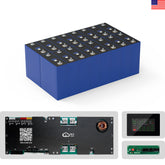

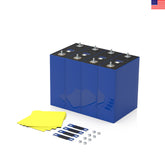

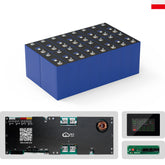

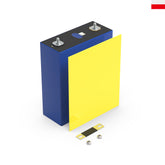

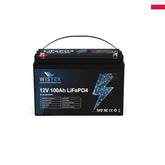
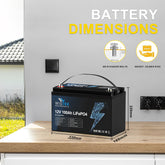
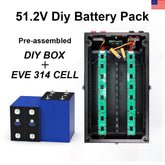

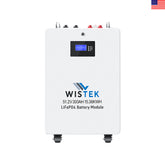
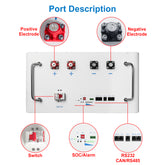
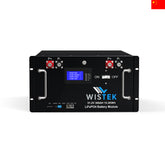
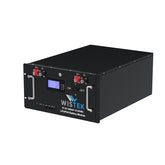


Leave a comment
All blog comments are checked prior to publishing